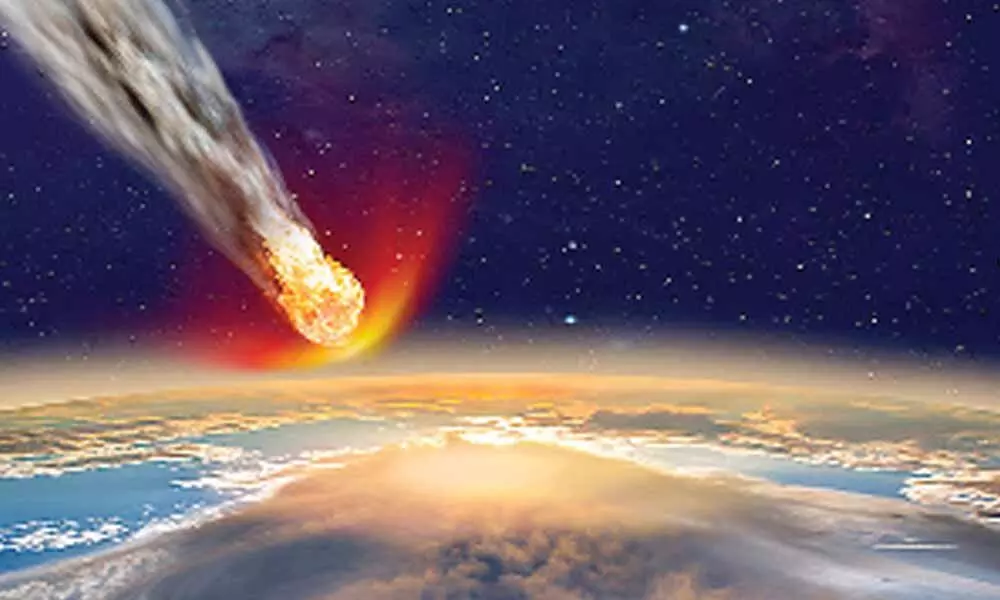Live
- Pravasi Bharatiya Divas Exhibition opens to public in Bhubaneswar
- DIG refutes claims of police resource diversion to Kuppam
- New-age agricultural careers: Opportunities in biotechnology and agri-tech
- Three killed in lorry-bus collision in Jadcherla
- New AI method to pick up arthritis, lupus early in patients
- 32 injured devotees return home
- Bhubaneswar: 5 held for brutal murder
- Developing your inner strength for personal growth success
- Jagannath temple favourite destination of NRIs
- Prez confers Pravasi awards on 27 eminent persons
Just In
Water originated on earth from asteroids, reveals a new research


A large proportion of the elements that are important for the formation of oceans and life, such as water, carbon, and nitrogen, were not already...
A large proportion of the elements that are important for the formation of oceans and life, such as water, carbon, and nitrogen, were not already present when the Earth began to form, but delivered to the planet very late in its history, according to a new study.
While it was previously assumed that water-bearing planetary building blocks, like asteroids, were already delivered to the Earth during the early stages of its formation, the findings, published in the journal Nature, suggest that most of the water was only delivered to the planet when its formation was almost complete. According to the researchers, including those from the University of Cologne in Germany, volatile elements such as water originated on the Earth from asteroids -- the 'planetary building blocks' that formed in the outer solar system.
However, they said, when precisely these asteroids came to the Earth is a topic widely debated among scientists. "We have now been able to narrow down the time frame much more precisely," said study first author Mario Fischer-Godde from the University of Cologne.
"To do so, we compared the composition of the oldest, approximately 3.8 billion-year-old mantle rocks from the Archean Eon with the composition of the asteroids from which they may have formed, and with the present-day composition of the Earth's mantle," Fischer-Godde said.
In the study, the researchers measured the abundances of alternate forms of a very rare metal called ruthenium, which was already present in the Earth's mantle by Archean time -- which began about four billion years ago with the formation of the planet's crust, and extended to about 2.5 billion years ago.
They said this rare element, belonging to the same group in the periodic table as the lustrous metal platinum, is an indicator for the late growth phase of the Earth. "Platinum group metals like ruthenium have an extremely high tendency to combine with iron.
Therefore, when the Earth formed all ruthenium must have been completely sequestered into the Earth's metallic core," said Fischer-Godde. However, the scientists said the presence of ruthenium in the Earth's mantle indicated they may have been added after the planet's formation.
"If we still find traces of the rare platinum metals in the Earth's mantle, we can assume that they were only added after the formation of the core was completed," added Carsten Munker, another co-author of the study from the University of Cologne.
"They were certainly added during later collisions of the Earth with asteroids or smaller protoplanets, so called planetesimals," Munker said.
These very late building blocks of the Earth are called 'late veneer' by scientists, the study noted. According to the researchers, if ruthenium was added during this stage, it is distributed and well mixed into the Earth's mantle by now. They said the old Archean mantle relics in Greenland have still preserved Earth's pristine composition.
"The up to 3.8 billion-year-old rocks from Greenland are the oldest preserved mantle rocks. They allow us a glimpse into the early history of the Earth as if through a window," Fischer-Godde said.
The Earth's oldest mantle, the study noted, is openly accessible in surface outcrops in southwest Greenland, allowing geologists to easily collect rock samples. Based on their analysis, the scientists said, the ruthenium preserved in the old mantle rocks most likely originates from the inner part of the solar system.
They suspect it could be the same material that may have also formed the planets Mercury and Venus. "Our findings suggest that water and other volatile elements such as carbon and nitrogen did indeed arrive on the Earth very late, during the late veneer phase," Fischer-Godde said.
The scientists said they hope to unearth more evidences from their field trips planned to India and Greenland to investigate more rock samples.

© 2025 Hyderabad Media House Limited/The Hans India. All rights reserved. Powered by hocalwire.com






